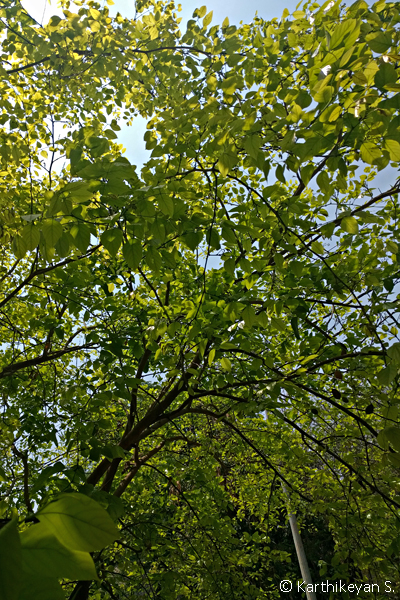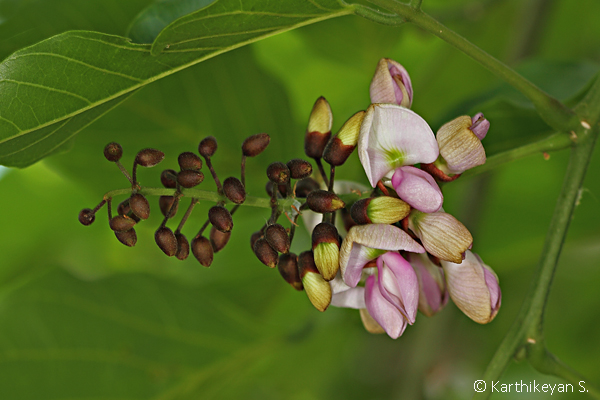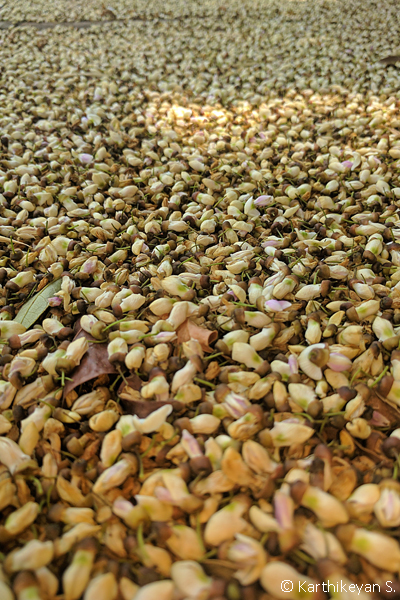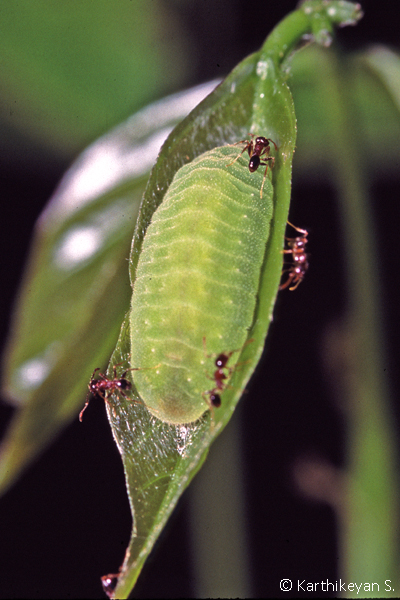A large plot of land with ample vegetation and a residential structure in the middle – this was very typical of old Bangalore. As a kid I grew up in a very similar set up; just that three families resided on this piece of land.
Shrubs like jasmine, barleria, hibiscus and the like that yielded flowers to be religiously plucked by the inhabitants as offering to the God were around. The trees that shared this space included a jackfruit tree, a mango tree, two drumstick trees, a sesbania tree, a guava tree, several coconut trees and banana plants. And of course, a pongam tree. Now there was a stone bench under the pongam tree. This added to the idyllic locale, perfect for summer holidays or for that matter any time that was spent outdoors. We kids, that lived on the premises, used it as our favourite haunt as it offered ample shade almost throughout the year. And of course, the guava tree in fruit – for very obvious reasons!
By virtue of the time spent under the Pongam tree we got to know it a little better than the others. My most favourite time would be when the tree put forth seeds. I would collect them into a pile as they fell down, only to be forgotten eventually as other things caught my fancy. During the monsoon I also saw wood louse, tiny brown beetles and many other things in the rotting leaf litter under the tree.
Everything about the tree is interesting and worth more than a look. After a very brief period of leaflessness just before the onset of the summer, the tree puts forth a new flush. The leaves are a glossy deep rust initially, quickly turning to a lovely shade of green that is extremely soothing and pleasing to the eye. Sitting under the tree and looking up at the backlit canopy of a pongam can be treat in itself.
That said, the early familiarity perhaps is the reason behind the continued affinity to the pongam tree. Even after all these years, I cannot stop myself from pausing beneath a pongam tree to spend a minute or enjoying the glimpse of the tree while passing by one.

During the flowering season, the inflorescence consisting of delicate pink flowers gives the tree a very distinct character.

A couple of days later the flowers having done their job, start falling to the ground. Now the ground beneath the tree is a sight to behold. The extent of this floral carpet depends upon the spread of the canopy itself!

In more recent times, ever since I got interested in butterflies, I learnt a few more things about the tree. Pongam happens to be the larval host plant of a few butterflies. While the larvae of the fast flying Common Banded Awl and the brilliantly coloured Indian Sunbeam feed on the leaves while hiding in the fold of a leaf that they make, the dainty Common Cerulean and the brilliantly coloured Dark Cerulean larvae enlist the services of ants as bodyguards as they feed on the pongam leaves!

The tree when in flower, also attracts other insects besides those that pollinate it. This also includes the leaf-cutter bee responsible for making those clean circular cuts in the tender pongam leaves.
All this and more – it is a tree that can keep you occupied in a variety of ways. So what are you waiting for? This is a good time to indulge in some pongam magic; go out and celebrate all the pongam trees in your vicinity.